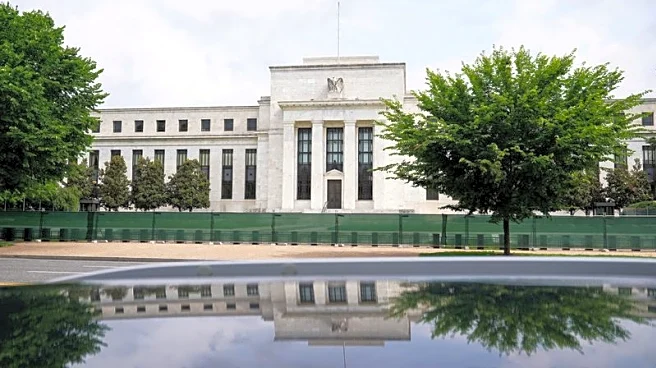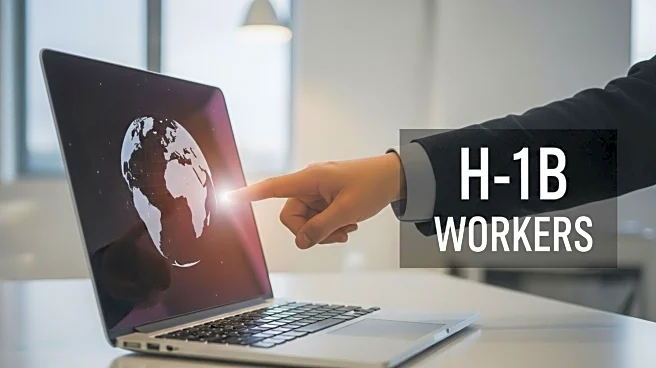What's Happening?
The Trump administration has announced a proposal requiring companies to pay $100,000 for new H-1B worker visas. This move has caused concern among Silicon Valley firms and Indian IT companies, which heavily rely on H-1B visas to employ skilled foreign workers. The announcement comes amidst a backdrop of steady global markets and a focus on future interest rate paths, with several Federal Reserve policymakers scheduled to speak this week. The initial market reaction to the visa fee proposal was muted, although India's Nifty 50 index experienced a slight decline, and the Indian rupee weakened. Analysts suggest that it may take time for companies to assess the impact on their margins due to the increased visa costs.
Why It's Important?
The proposed fee for H-1B visas could significantly affect the U.S. tech industry, which depends on foreign talent to fill specialized roles. Companies may face increased operational costs, potentially leading to reduced hiring or shifts in business strategies. This change could also impact the competitiveness of U.S. firms in the global market, as they may struggle to attract skilled workers. Additionally, the proposal may strain U.S.-India relations, given the reliance of Indian IT firms on H-1B visas. The broader economic implications include potential shifts in labor market dynamics and increased pressure on companies to innovate in workforce management.
What's Next?
As the proposal unfolds, companies and industry groups are likely to lobby against the fee increase, citing potential negative impacts on business operations and competitiveness. The Federal Reserve's upcoming meetings and speeches by key policymakers, including Fed Chair Jerome Powell, will be closely watched for indications on interest rate adjustments, which could further influence market sentiment. Stakeholders in the tech industry may also explore alternative visa options or strategies to mitigate the impact of the proposed fee.
Beyond the Headlines
The proposed visa fee increase raises ethical and legal questions about immigration policy and its alignment with economic goals. It may prompt discussions on the balance between protecting domestic jobs and fostering innovation through global talent. Long-term shifts could include changes in how companies approach international recruitment and the development of domestic talent pipelines.











